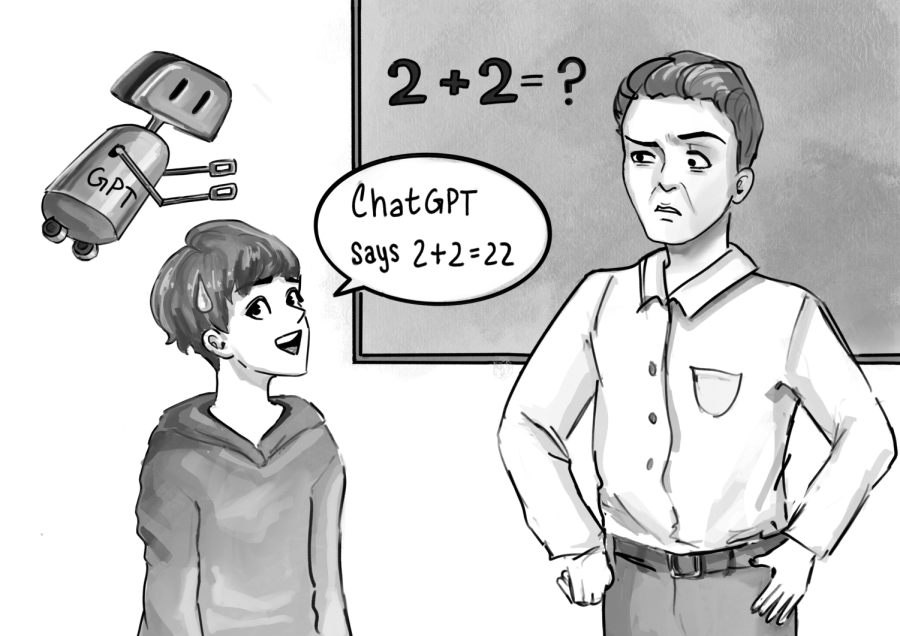Editorial: ChatGPT seems scary, but it has potential in the school setting
January 30, 2023
OpenAI’s ChatGPT came out on Nov. 30 of last year. Its unprecedented ability to churn out human-like text has raised larger questions about the future role of AI in schools, causing widespread bewilderment and conflicted opinions among teachers and students.
Is the fear warranted? Can AI be carefully integrated into schooling for good uses?
Last December, District 203 temporarily blocked ChatGPT on the school network during finals, but has yet to confirm any lasting restrictions. The district is still in the process of gathering information, such as getting feedback from staff members.
Our editorial board believes that ChatGPT has the potential to enhance learning just like previous technologies — calculators and Grammarly, for example — but should remain blocked until Central can find proper ways to use it.
The first step: understanding ChatGPT. Teachers should be given institute time to familiarize themselves with AI’s potential applications in school, whether it’s cheating or what it can do for curriculum purposes. Understanding helps to remove the blanket fear and “why am I even teaching” mindset among teachers, especially those who teach writing-heavy courses.
After all, even if ChatGPT continues to be blocked in schools, teachers must still be trained to sniff out AI from student work.
While much of the attention is on the English department, social studies and even science classes could see changes in teaching style or curriculum soon. Classes that have asked students to “describe the functions of mitochondria” or “explain the long-term effects of the Civil War” may need to adapt their curriculum to include more personalized, AP-Style type of questions.
One of the most obvious ways ChatGPT can be used to cheat is through take-home essays: long research papers, book analyses, etc. These assignments, traditional in English classes, may change to in-class work, taking on a more impromptu structure to be completed in 50 minutes. These in-class adaptations, however, take quite a bit away from other classwork.
The threat to take-home assignments could also lead to a more revision-based process. ChatGPT, while known to be able to evaluate writing, isn’t nearly as potent in revision and editing as it is in creation. Hypothetically, students could be asked to write a rough draft in the first class period and spend the next weeks revising, all while sticking more or less to that original draft. This way, teachers know that it was the student’s own work.
One thing is certain: essays surely won’t be eliminated from classes altogether. Socratic seminars and tests can’t assess a student’s ability to synthesize and organize ideas to the same degree.
Along with taking preventative and mitigating measures, we should also be looking for ways to employ AI for learning. The district needs to take student and staff feedback into account, because they are the most impacted by AI. Especially with the district still in the preliminary stages of adapting to AI, student and staff voices are more important than ever to determine the way forward.
It’s impossible to predict the future. But if SparkNotes and Grammarly are any indication, ChatGPT can help to streamline the writing process. And similar to how calculators made basic arithmetic more efficient, thereby allowing students to dive even further into mathematics, the changes that chatbots force us to make could propel the humanities forward, not the unemployment rate.
AI is here to stay, and we can’t pretend that it’s not.








